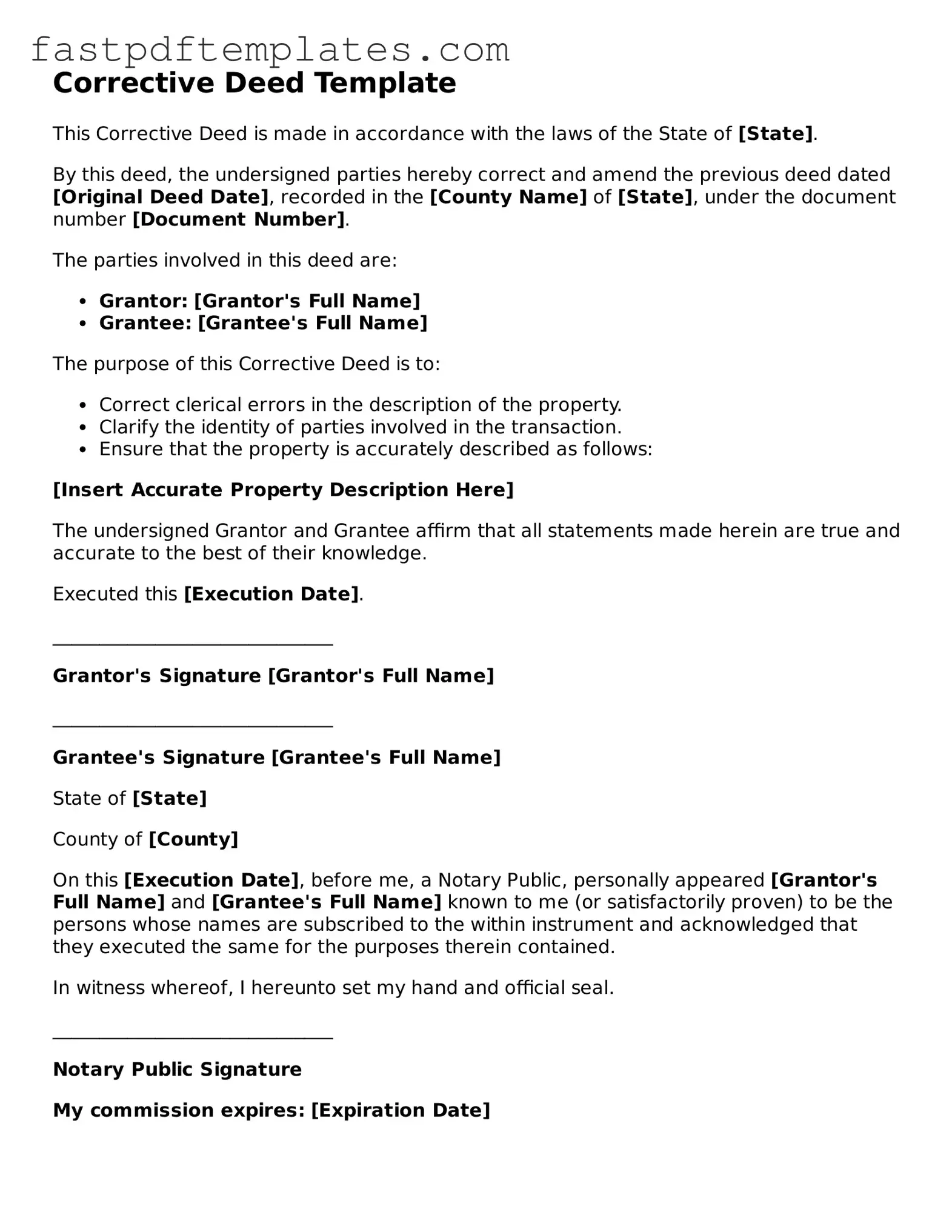Corrective Deed Template
This Corrective Deed is made in accordance with the laws of the State of [State].
By this deed, the undersigned parties hereby correct and amend the previous deed dated [Original Deed Date], recorded in the [County Name] of [State], under the document number [Document Number].
The parties involved in this deed are:
- Grantor: [Grantor's Full Name]
- Grantee: [Grantee's Full Name]
The purpose of this Corrective Deed is to:
- Correct clerical errors in the description of the property.
- Clarify the identity of parties involved in the transaction.
- Ensure that the property is accurately described as follows:
[Insert Accurate Property Description Here]
The undersigned Grantor and Grantee affirm that all statements made herein are true and accurate to the best of their knowledge.
Executed this [Execution Date].
______________________________
Grantor's Signature [Grantor's Full Name]
______________________________
Grantee's Signature [Grantee's Full Name]
State of [State]
County of [County]
On this [Execution Date], before me, a Notary Public, personally appeared [Grantor's Full Name] and [Grantee's Full Name] known to me (or satisfactorily proven) to be the persons whose names are subscribed to the within instrument and acknowledged that they executed the same for the purposes therein contained.
In witness whereof, I hereunto set my hand and official seal.
______________________________
Notary Public Signature
My commission expires: [Expiration Date]
